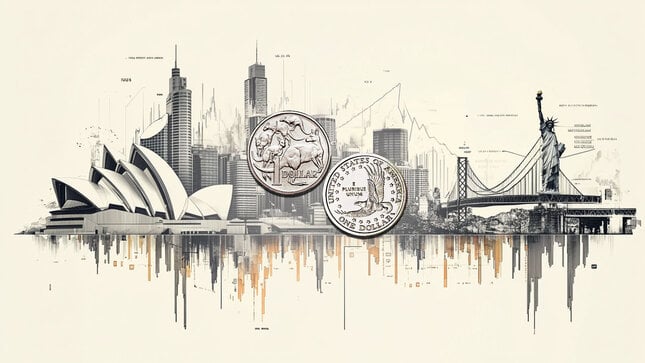The coming German government managed to pass its’ large fiscal package through parliament with support from The Green party, leaving the German economy set to receive the largest fiscal boost in at least three decades. The package must also be passed in the Bundesrat on Friday, which is it likely to be. The three pillars of the package are:
1. An infrastructure fund of EUR 500 billion (12% of GDP) outside the ordinary budget. The fund is to run over 10 years and be used for additional investments in transport infrastructure, electricity grids, public housing, and digitalisation, of which EUR 100 bn are earmarked a fund for green initiatives.
2. A change to the "debt brake" that exempts both defence expenditures exceeding 1% of GDP (€ 45 billion) and support for Ukraine from the debt brake limits. Thereby setting no upper limit on defence spending, but which is expected to be around EUR 400 bn (10% of GDP) the coming 10 years.
3. A relaxation of the states' budget requirement "black zero" from a requirement of 0% deficit to 0.35% of GDP in deficit.
As lawmaker’s has had less than one month to negotiate the package there are no further details on what exactly the money will be spent on. When a new government is formed, which will likely take around one month, we will get to know more.
Significant boost to growth is expected
We expect the package to have a positive effect on Germany's economy, as the lack of public investments has been one of the main arguments for weak productivity and structural growth. The infrastructure fund is expected to be the part of the package that has the greatest impact on the economy, as the easing of regional states’ budget is minor and since defence equipment is mainly produced outside of Germany. Public investments in infrastructure are the part of fiscal policy that has the greatest impact on growth, and the German central bank assumes the fiscal multiplier to be around 1.0 in the first year in their forecasting model. This means that if investments equivalent to 1% of GDP are made, for example, in 2027, real GDP growth will also increase by 1% in 2027. In the longer term, investments in infrastructure can increase private sector productivity e.g. due to faster internet and better roads, leaving GDP to rise significantly more than 1 euro for each euro spent (see table to the right).
Download The Full Research Germany
This publication has been prepared by Danske Bank for information purposes only. It is not an offer or solicitation of any offer to purchase or sell any financial instrument. Whilst reasonable care has been taken to ensure that its contents are not untrue or misleading, no representation is made as to its accuracy or completeness and no liability is accepted for any loss arising from reliance on it. Danske Bank, its affiliates or staff, may perform services for, solicit business from, hold long or short positions in, or otherwise be interested in the investments (including derivatives), of any issuer mentioned herein. Danske Bank's research analysts are not permitted to invest in securities under coverage in their research sector.
This publication is not intended for private customers in the UK or any person in the US. Danske Bank A/S is regulated by the FSA for the conduct of designated investment business in the UK and is a member of the London Stock Exchange.
Copyright () Danske Bank A/S. All rights reserved. This publication is protected by copyright and may not be reproduced in whole or in part without permission.
Recommended Content
Editors’ Picks

AUD/USD: Bulls need to clear the 200-day SMA
AUD/USD treaded water around 0.6360 after once again faltering near recent tops in the 0.6440 zone, always on the back of the intense recovery in the US Dollar. In the meantime, positive headlines on the US-China trade front could help the Aussie stay in the upper end of the range for the time being.

EUR/USD strengthens above 1.1300 on gloomy Fed’s Beige Book
The EUR/USD pair edges higher to around 1.1335 during the early Asian session on Thursday. Mitigating concerns over potential tariff threats by US President Donald Trump exerts some selling pressure on the US Dollar.

Gold corrected extreme conditions, struggles around $3,300
Gold extended its decline on Wednesday, slipping below the $3,300 mark per troy ounce in response to reports from the media suggesting the Trump administration is weighing tariff reductions on Chinese goods, a news that revived hopes of easing trade tensions and reduced demand for the yellow metal as a safe-haven asset.

TRUMP meme coin rallies following announcement of President Trump's upcoming dinner with top 220 holders
Official TRUMP rallied 50% on Wednesday after the team behind the meme coin announced plans for its top 220 token holders to have a dinner with President Donald Trump in May. The announcement also included an extension of the token's initial unlock plan by an additional 90 days.

Five fundamentals for the week: Traders confront the trade war, important surveys, key Fed speech Premium
Will the US strike a trade deal with Japan? That would be positive progress. However, recent developments are not that positive, and there's only one certainty: headlines will dominate markets. Fresh US economic data is also of interest.

The Best brokers to trade EUR/USD
SPONSORED Discover the top brokers for trading EUR/USD in 2025. Our list features brokers with competitive spreads, fast execution, and powerful platforms. Whether you're a beginner or an expert, find the right partner to navigate the dynamic Forex market.